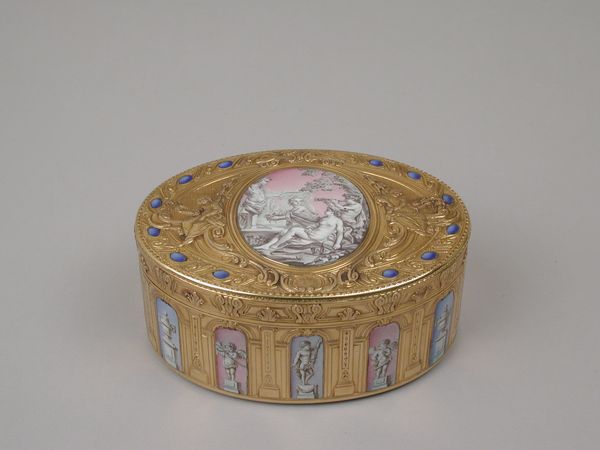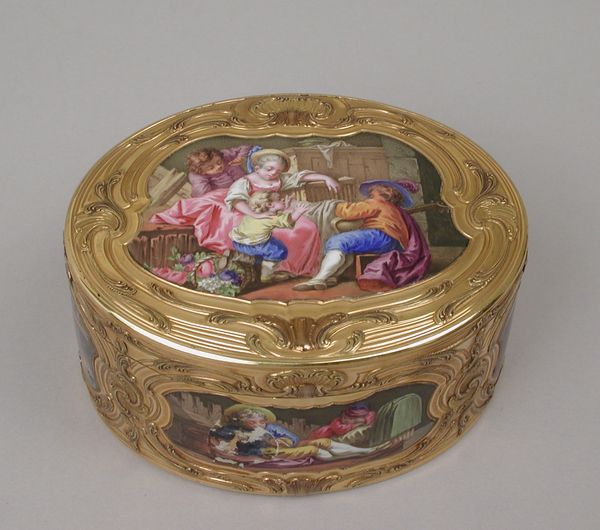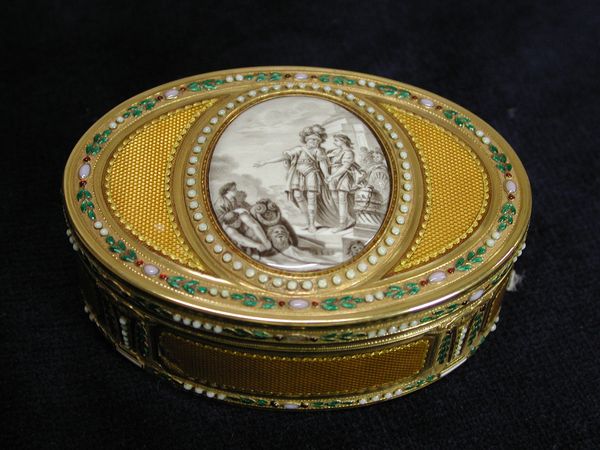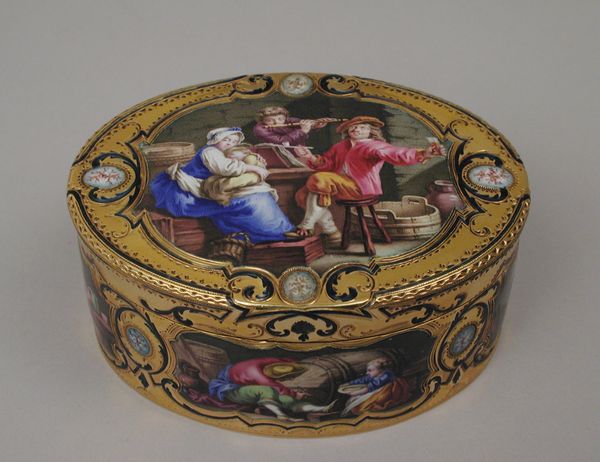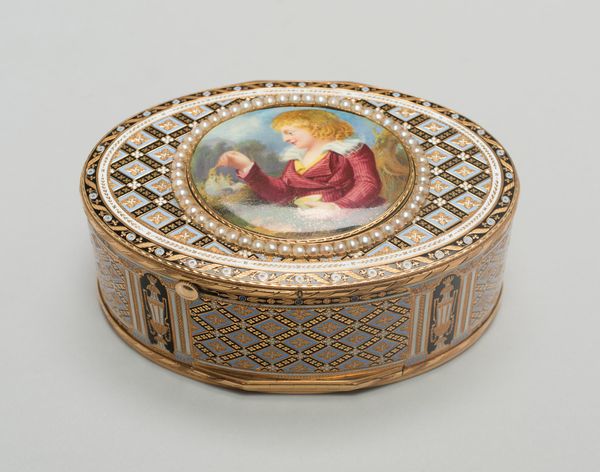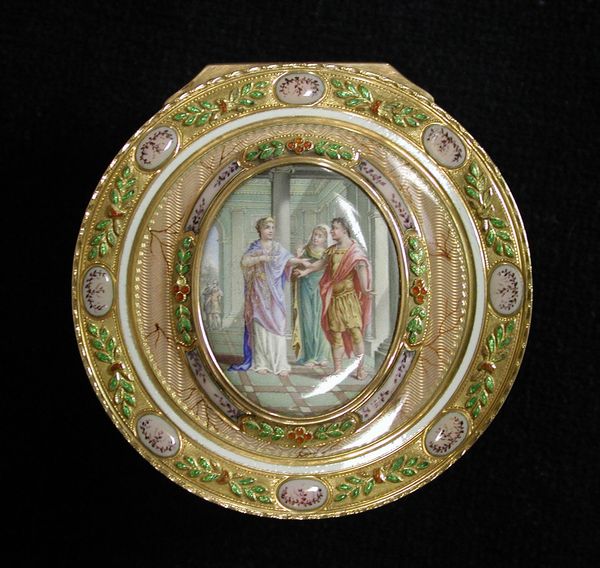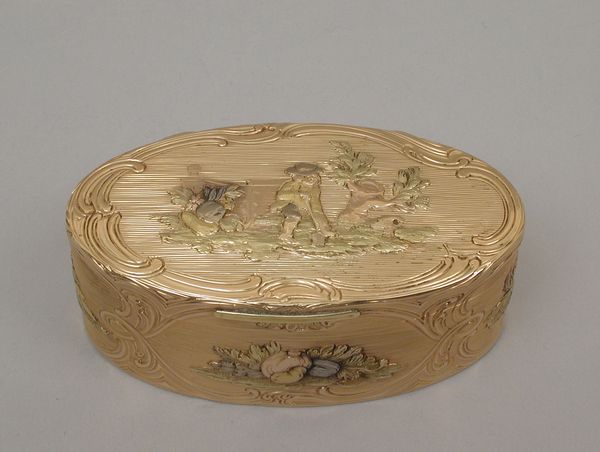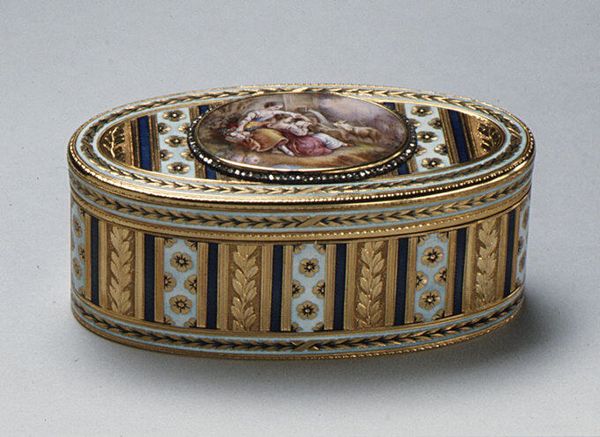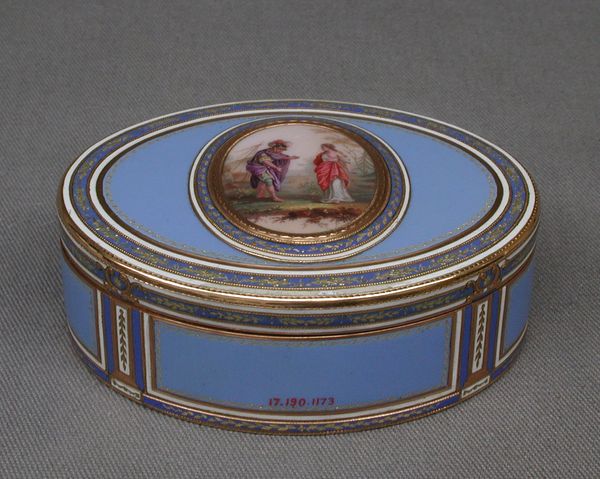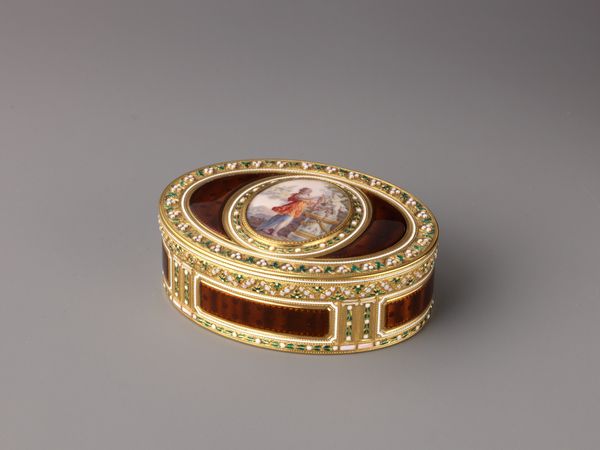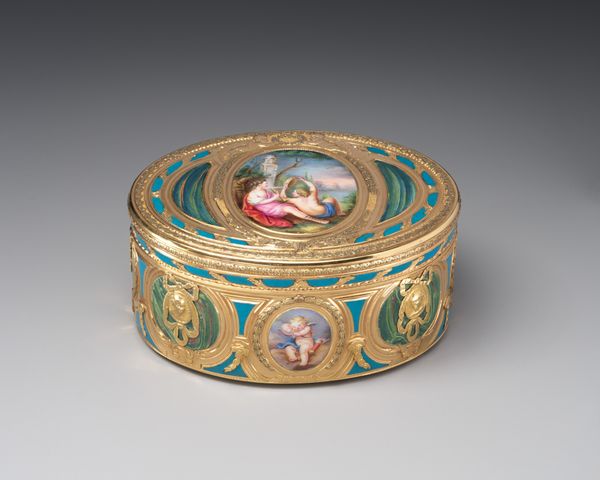
Snuffbox with scene of two maids and cupid at altar of love 1775 - 1785
0:00
0:00
Dimensions: Overall: 1 3/8 × 3 1/4 in. (3.5 × 8.3 cm)
Copyright: Public Domain
Editor: So, this beautiful little object is a snuffbox, created by Les Frères Souchay between 1775 and 1785. It’s currently housed at the Metropolitan Museum of Art. It's made of gold and enamel, and features a miniature fresco. The scene on the lid shows two maids and cupid at what looks like an altar. There’s something about the figure of cupid looking so despondent that undercuts the whole theme of love... it's quite intriguing! How do you interpret this work? Curator: That despondency is key. Rococo art often masked complex social commentaries beneath a veneer of frivolity. Considering the late 18th century, on the cusp of revolution, what power structures are being subtly critiqued here? Who has access to love and pleasure, and at what cost? Think about the figures depicted. We see women, seemingly serving a ritual to Cupid, but their agency is unclear. Are they celebrating love or performing it? Is it real? Editor: That's a perspective I hadn't considered! I was just seeing the beautiful craftsmanship and a slightly melancholic scene. You’re suggesting it might be about the limited roles and expectations placed on women within the context of courtship and marriage. Curator: Precisely. And who benefits from this performance? Is love itself being commodified? The luxury of the snuffbox, made of gold and enamel, speaks to a privileged class. Is this ideal of love accessible to all, or is it a luxury, another form of control? Notice how even Cupid appears burdened by the whole charade. He's literally supporting it, weighed down! Editor: It really reframes my understanding! The playful Rococo aesthetic can be very deceiving. It prompts me to think about how class and gender intertwine, dictating certain emotional performances and access to idealized romantic love. Curator: Exactly. Objects like these are never just pretty baubles. They are artifacts of a specific social and political climate, and they hold narratives of power, desire, and societal expectations. This shifts my whole perspective of decorative arts, I will have to revisit some assumptions.
Comments
No comments
Be the first to comment and join the conversation on the ultimate creative platform.
